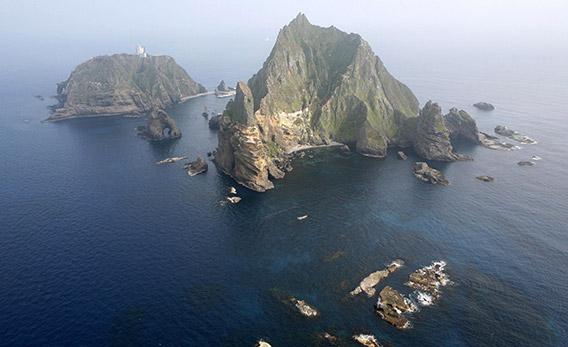Japan and South Korea are locked in a territorial dispute over two tiny, barely inhabited islands in the Sea of Japan. Japan has a territorial dispute with China, and China is involved in a number of territorial disputes with India. India and Pakistan have been fighting over Kashmir for decades. Just how much of the planet’s land is subject to disputed ownership?
At most, 300,000 square miles. There’s no official running tally of property under dispute, but it amounts to less than one-half of 1 percent of the Earth’s landmass. There are currently around 60 legitimate disputes, counting only disputes between nations over parcels of land, not separatist regions within existing countries. A couple of major disagreements in Asia account for a large portion of that area. Kashmir, for example, covers about 86,000 square miles, with India, Pakistan, and China all staking claims. The unsettled border regions between India and China—it’s not one continuous swath of land, but it’s all wrapped up in the same Sino-Indian dispute—represent about 48,000 square miles. Most of the other disputed territories are far smaller, ranging from minuscule rock islands to a few thousand square miles.
The competing claims over Kashmir and other long-running disputes make it seem as though countries never settle their land disagreements, but that perception is a result of selection bias: The oldest and most famous disputes are the hardest to settle. In fact, most territorial disagreements have been resolved peacefully, and the area of disputed land has plummeted in the past few decades. At the end of World War II, there were 165 territorial disputes worldwide, more than 60 percent of which have been settled.
The rise of China and other Asian powers has attracted scholarly interest in territorial disputes in recent years. There are some indications that the spread of democracy will result in fewer disputes and less landmass subject to dispute. Two-thirds of the countries involved in territorial disagreements are nondemocratic states, and studies suggest the democratic countries that are locked in disputes are more likely to negotiate and offer land concessions. An important exception to this rule is China, which has displayed a willingness to negotiate in many such situations. In just over 60 years, China has gone from 23 land disputes down to just six. In the majority of its settlements, China accepted less than one-half of the territory it originally claimed.
It should also be noted that democratic governments have been unable to resolve some of the most intractable land disputes in the world. India has been a legitimate democracy during most of the Kashmir crisis, and Pakistan has been an on-and-off democracy during that period. Many disputed lands have more symbolic than economic or strategic importance, and observers note that even democratically-elected politicians in countries like India and Pakistan use the dispute to whip up nationalist fervor. The United Kingdom, an indisputably democratic country, has also exhibited a curious inability to settle its land disputes with other democracies. The British argument with Spain over the status of Gibraltar—a 2.6-square-mile rock hosting just under 30,000 people—has dragged on for nearly three centuries. Britain’s dispute with Argentina over the Falkland Islands has been going on for two centuries, even though just 3,000 or so people live scattered across the 4,700-square-mile area.
Got a question about today’s news? Ask the Explainer.
Explainer thanks M. Taylor Fravel of MIT and Paul Huth of the University of Maryland.
